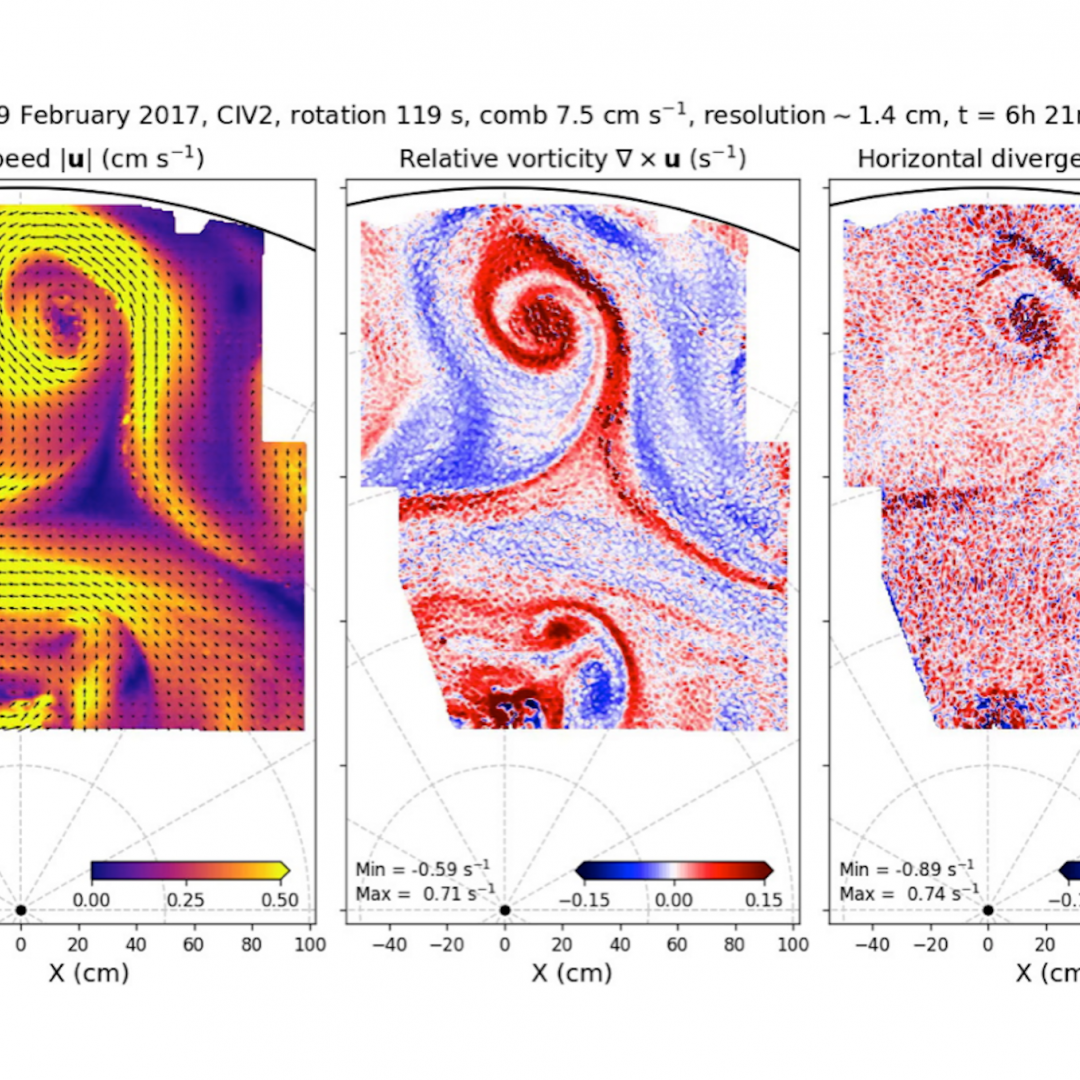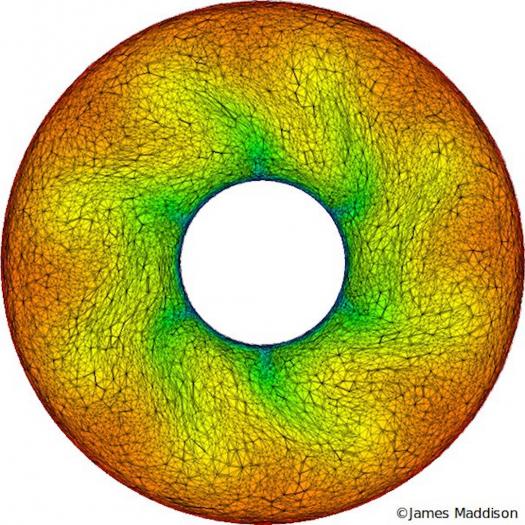Fluid dynamics underpins our understanding of a huge number of phenomena in geophysics and astrophysics, ranging from small, dusty vortices generated by the wind in your garden up to convection in the interiors and atmospheres of stars and planets or the self-gravitating motions of giant clouds of gas and dust that permeate the galaxy from which stars are borne. Our research embraces various approaches to studying the physics underlying these phenomena, including mathematical theory, numerical simulations and even laboratory experiments.
Rotating and/or stratified flows
From a physicist's perspective, the atmospheres, oceans and fluid interiors of any planet are special examples of rotating fluid systems, with or without density stratification, in which motions are generated by the action of buoyancy, surface stresses and other forces. In our research we are seeking to understand some of the fundamental principles which underly the dynamics, formation of waves, and instabilities of rotating fluids, when subject to mechanical stirring or shearing, differential heating and cooling or other forces.
In our laboratory work we make extensive use of the concept of dynamical similarity, in which parameters such as the size, rotation rate or density contrast imposed on a system can be chosen to give essentially the same balance of forces on a laboratory scale as e.g. on the scale of an entire planet! This enables us to reproduce phenomena such as baroclinic cyclone and anticyclone weather systems, familiar from weather maps, in a rotating tank only 20-50 cm across. This also helps when applying results and insights from laboratory experiments to understanding phenomena observed in the atmospheres or oceans of the Earth or other planets.





